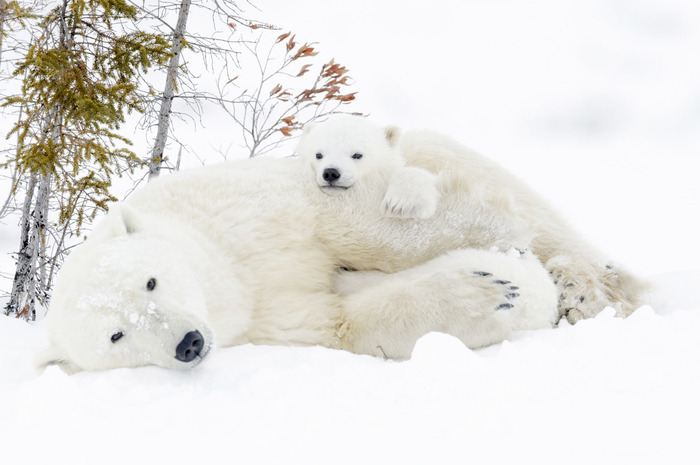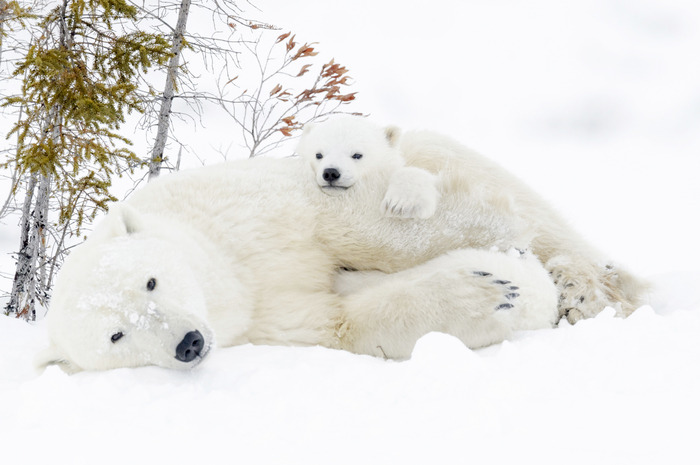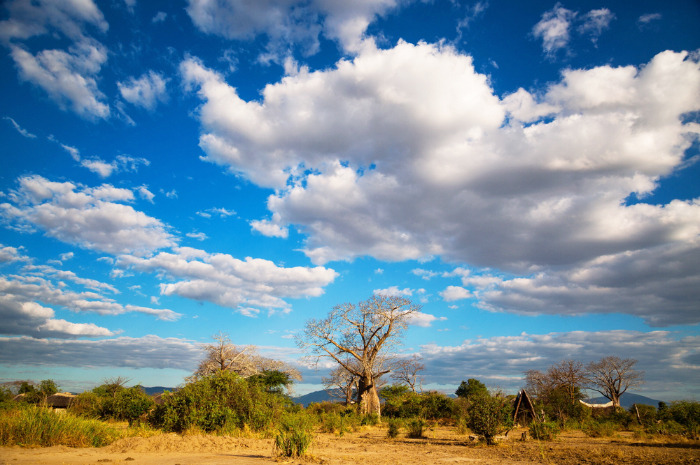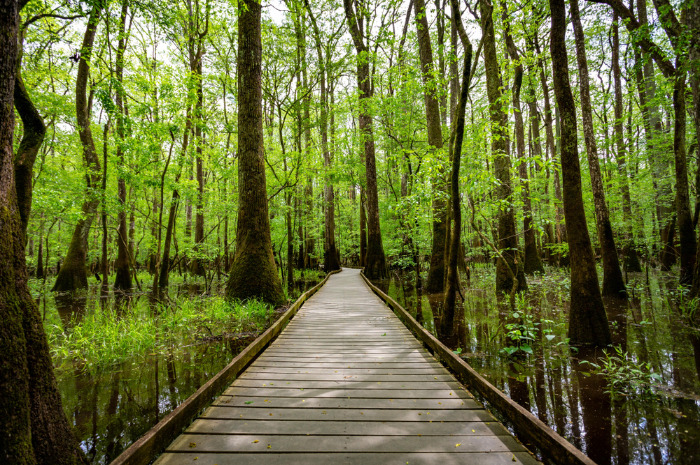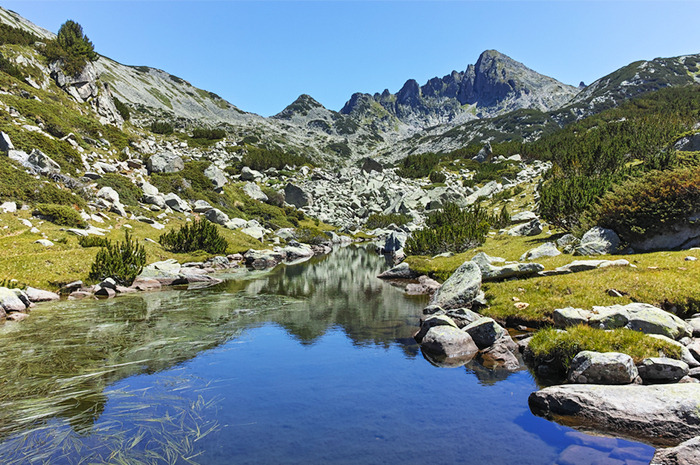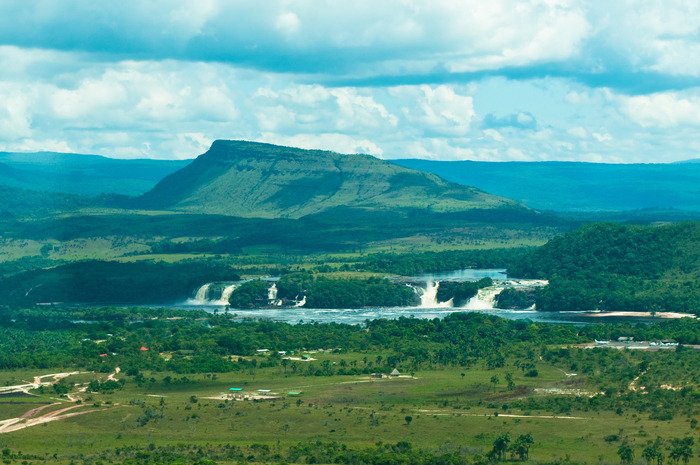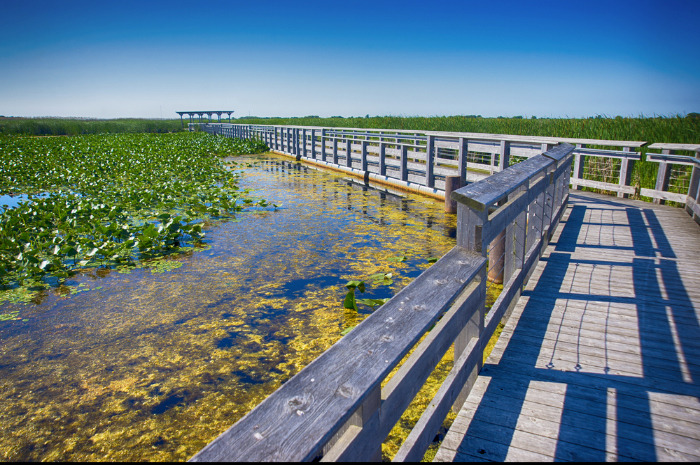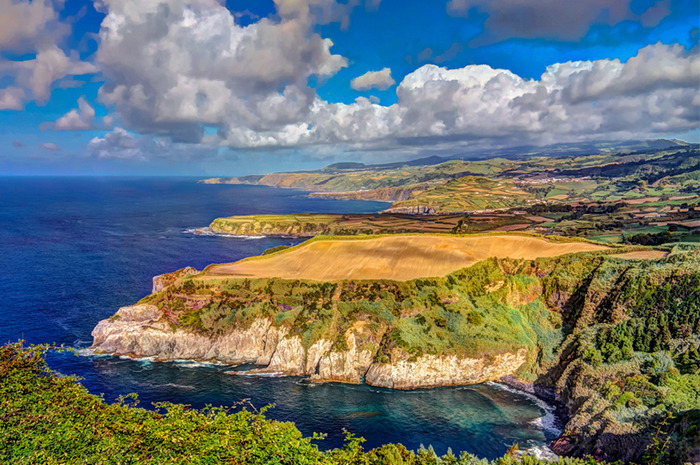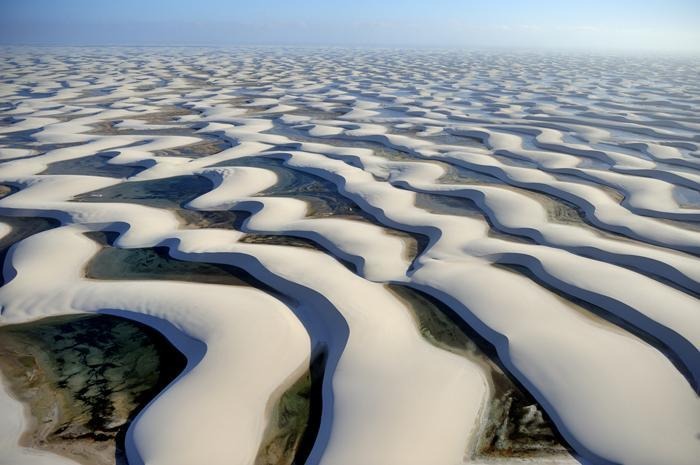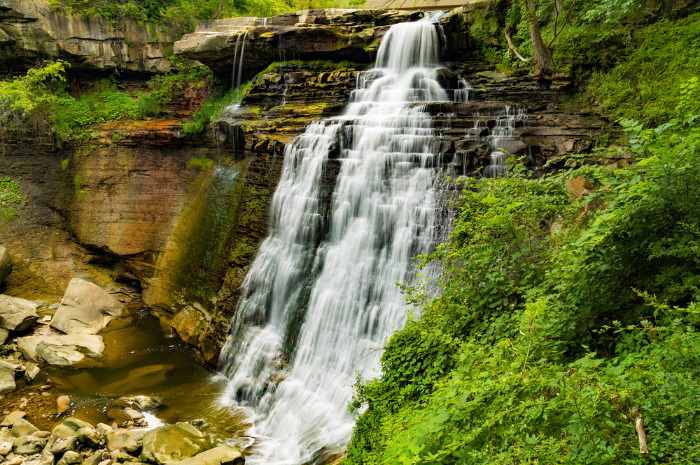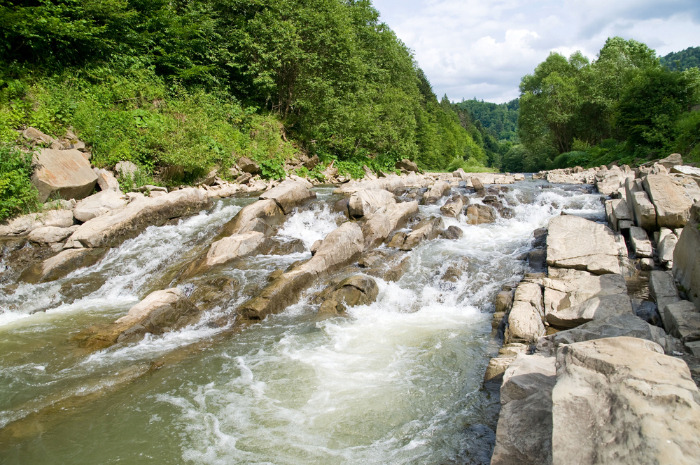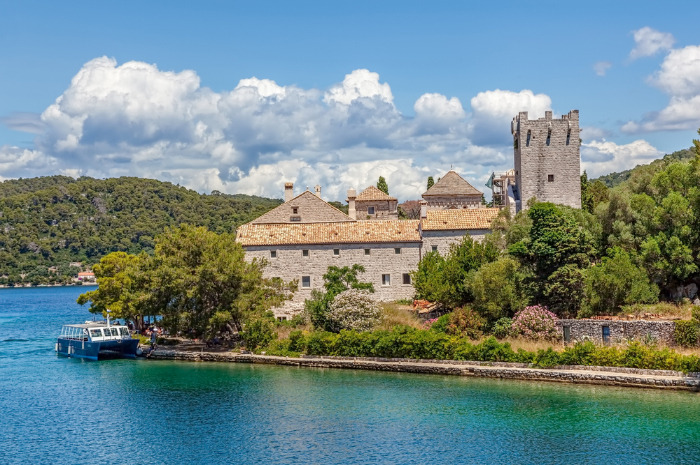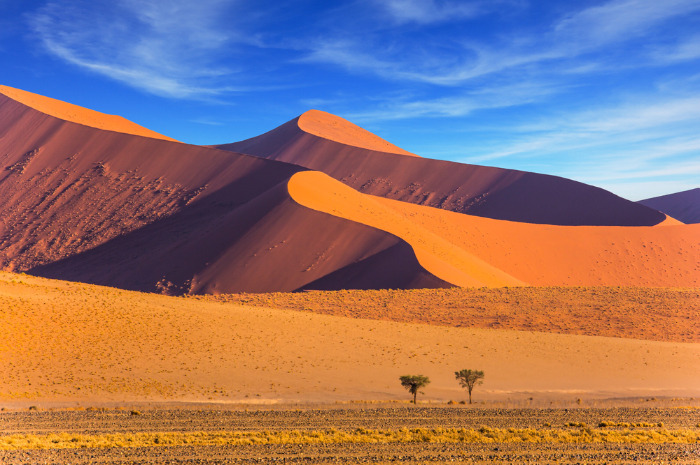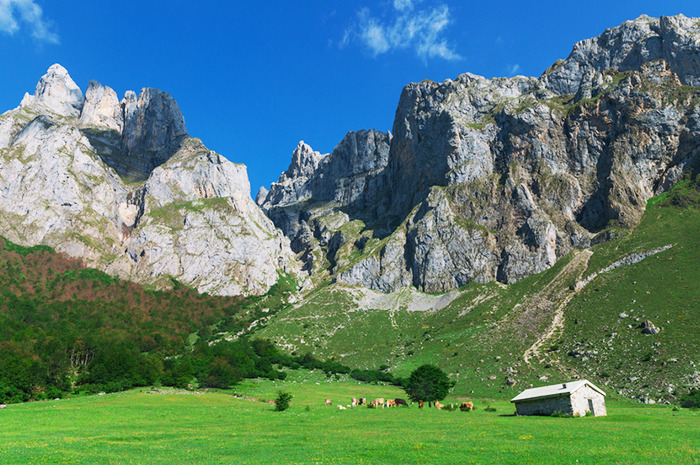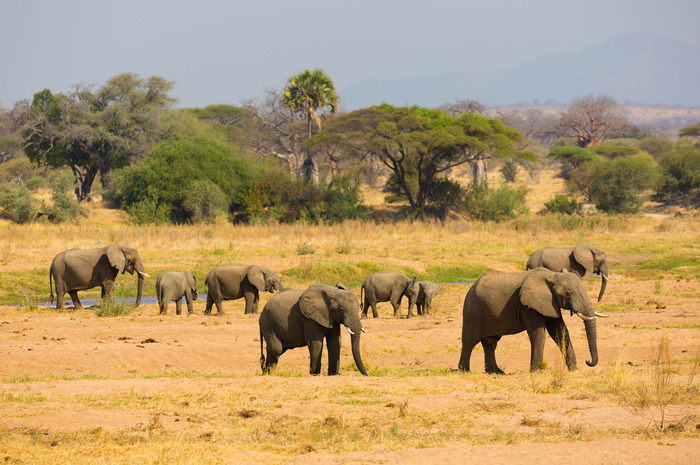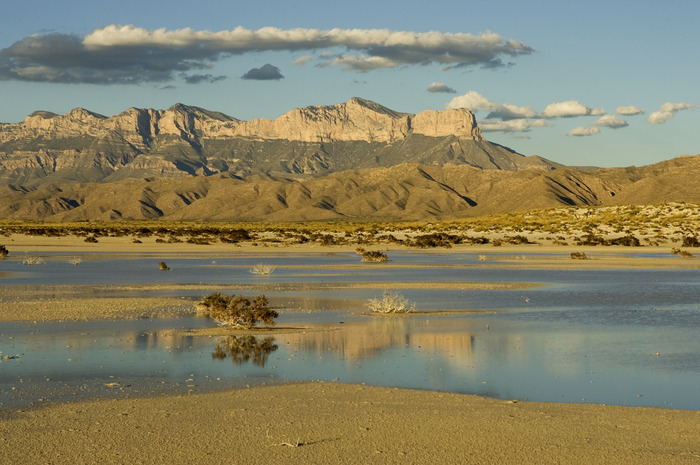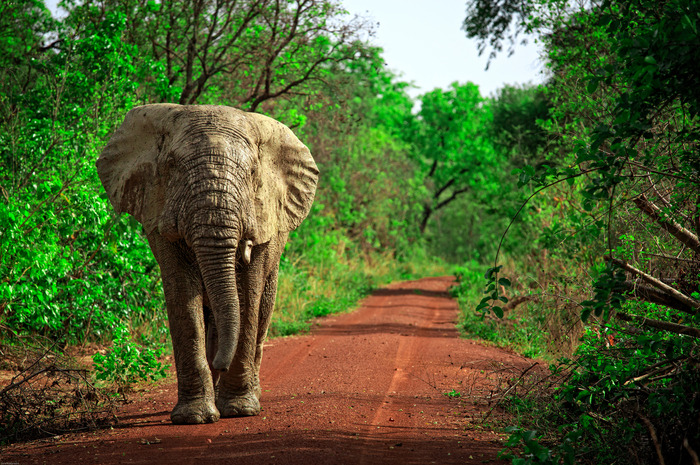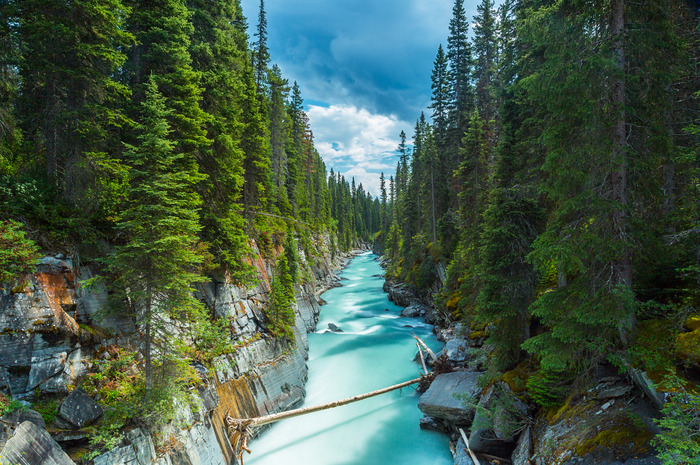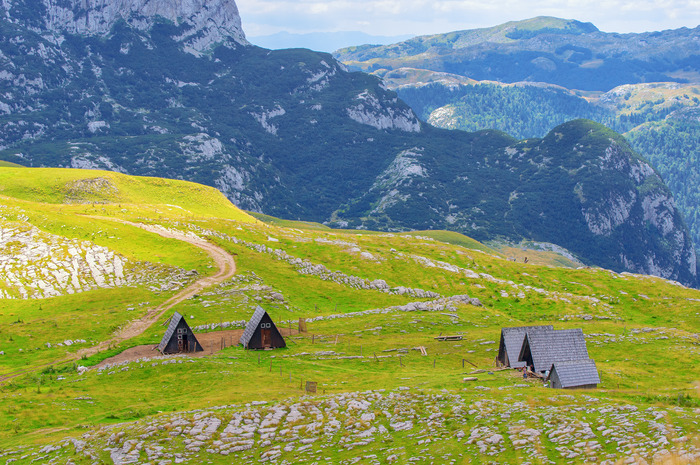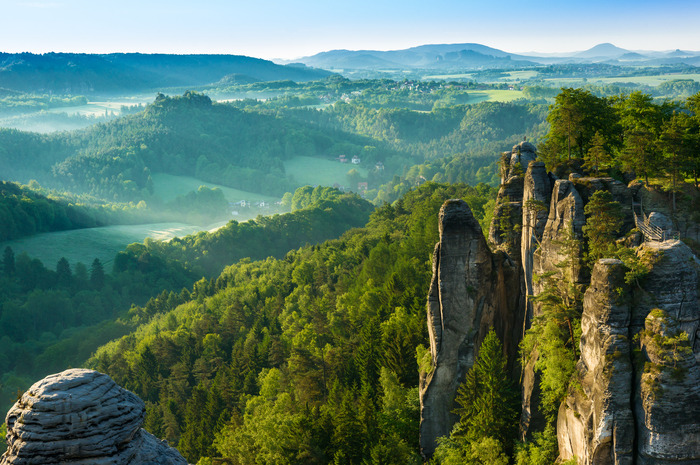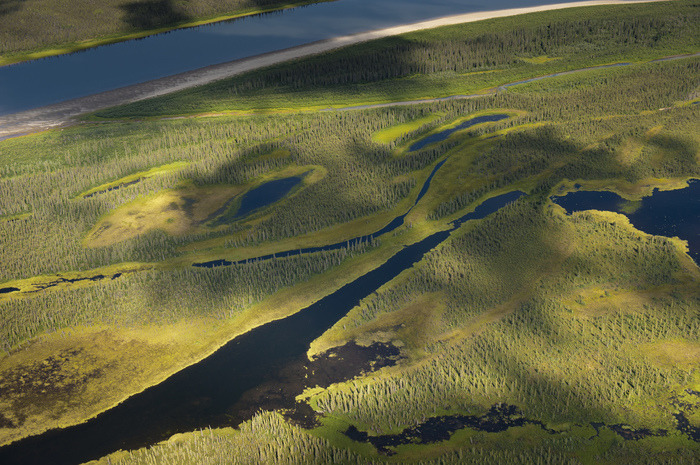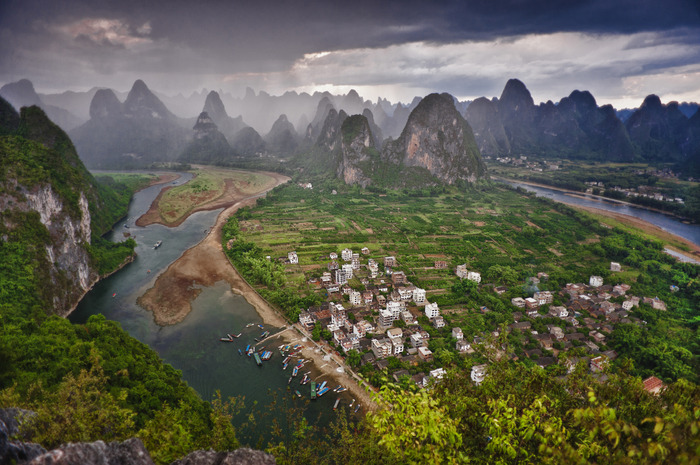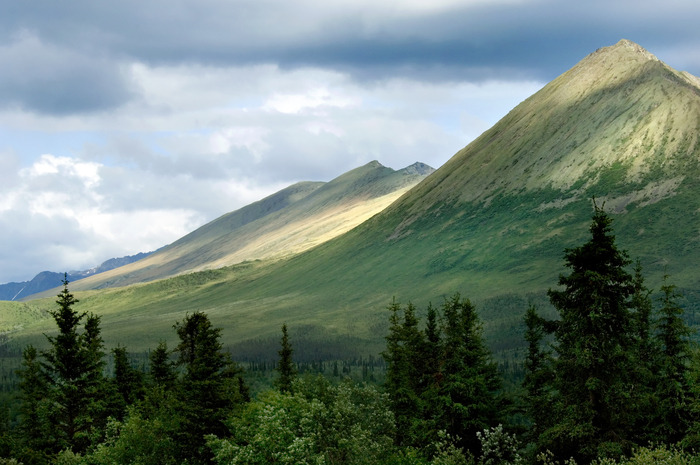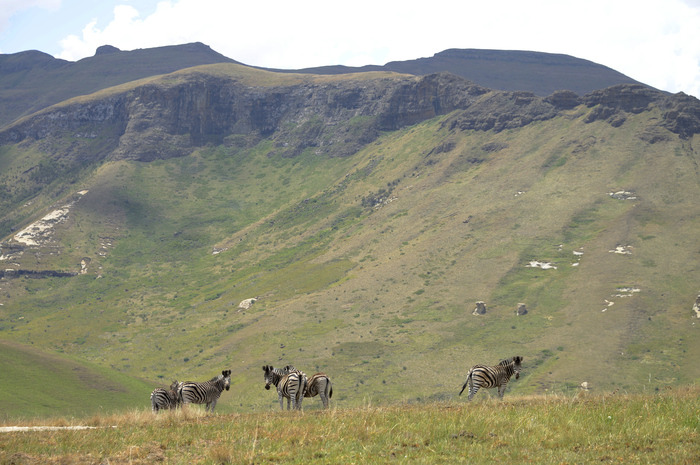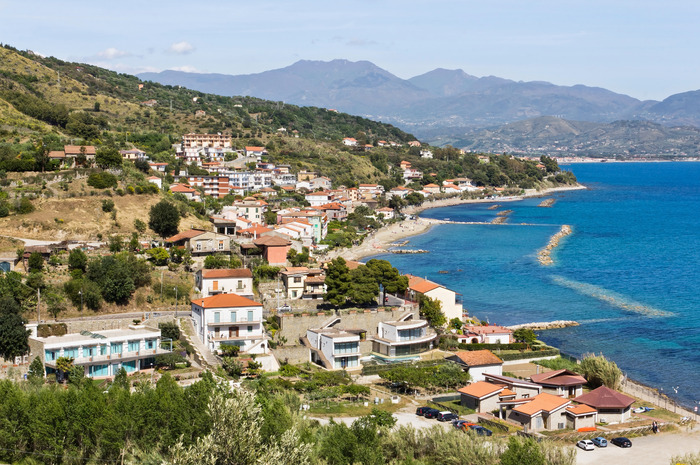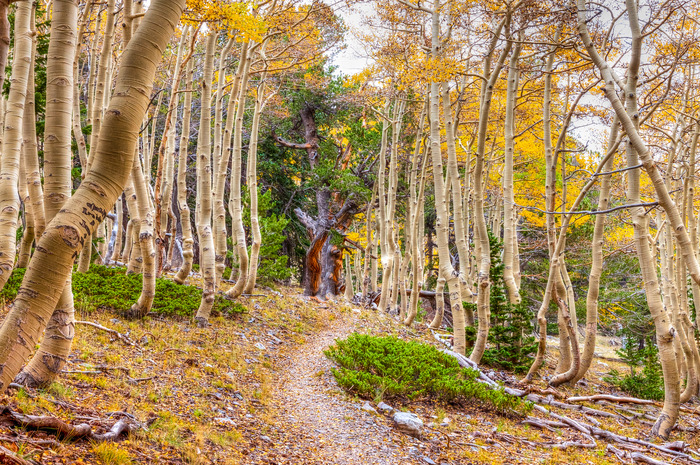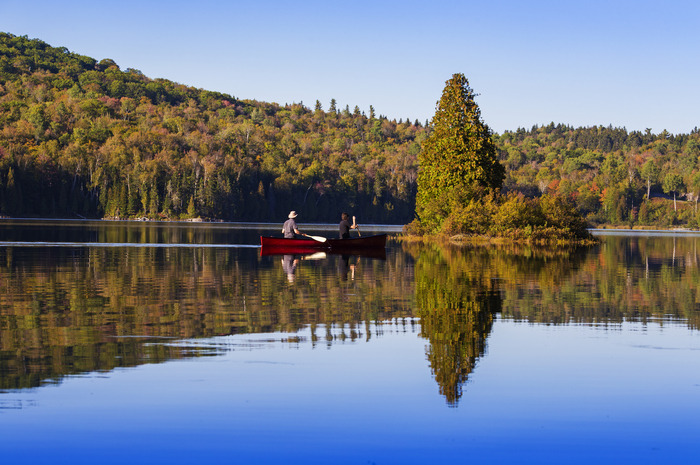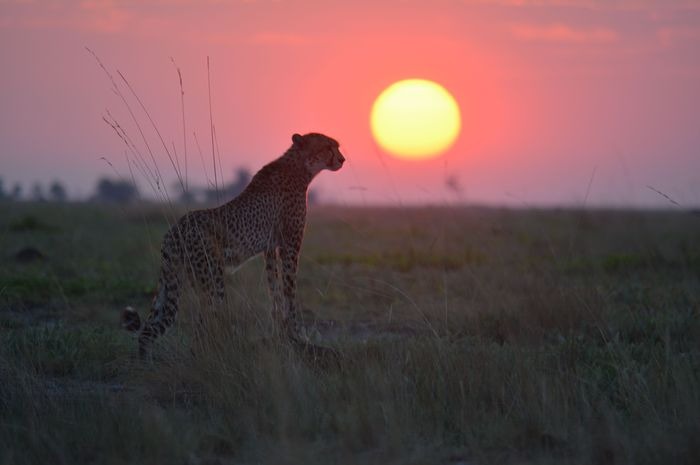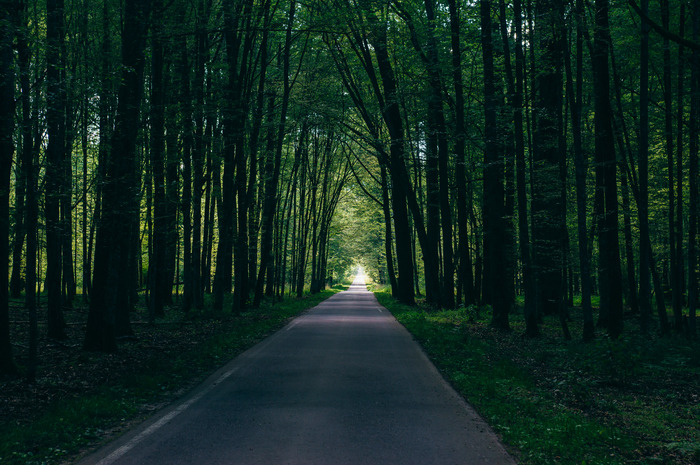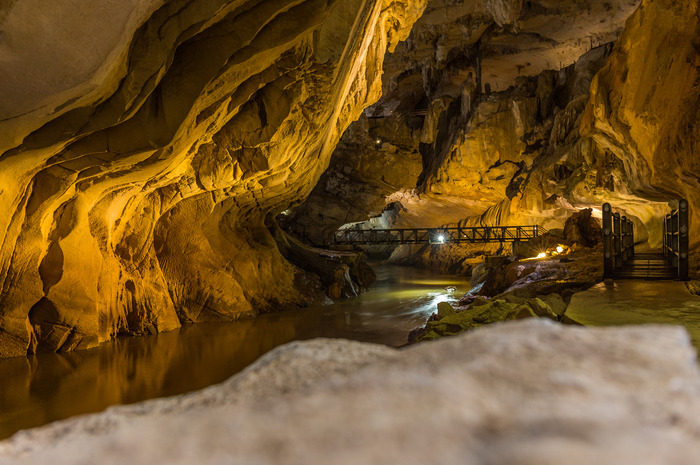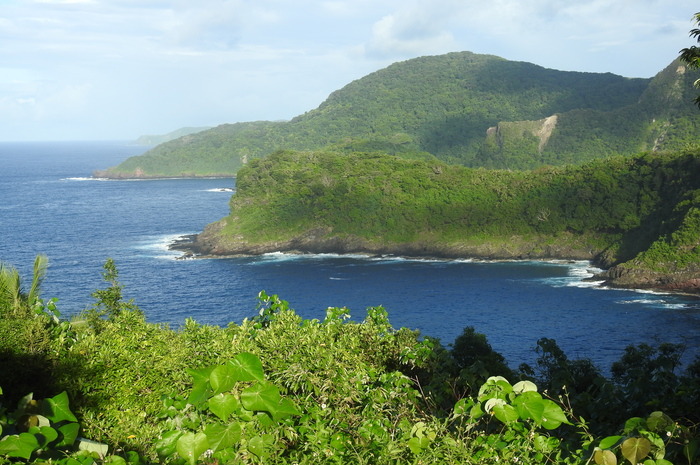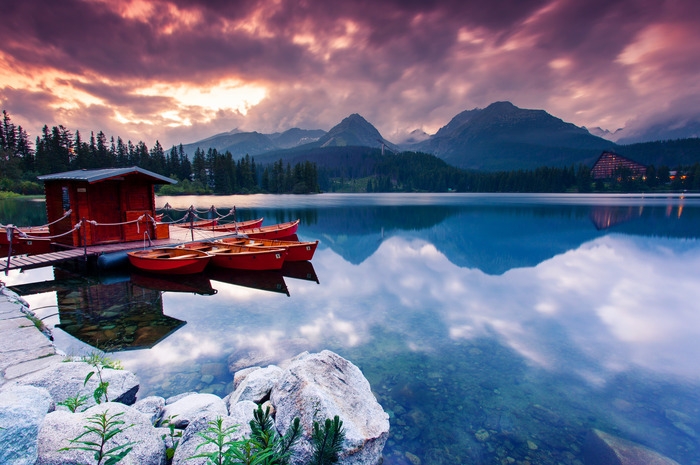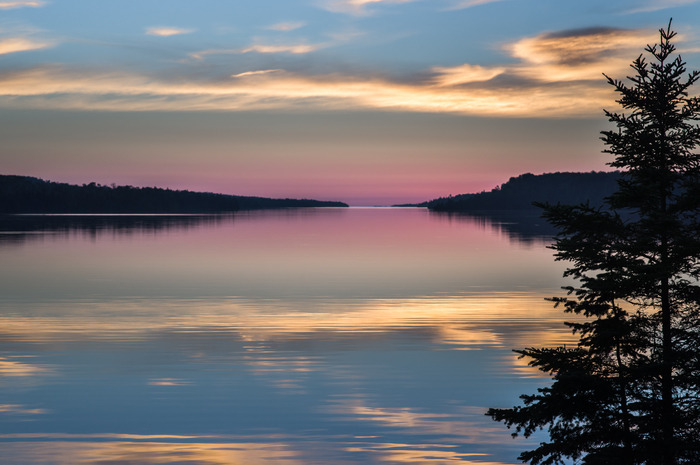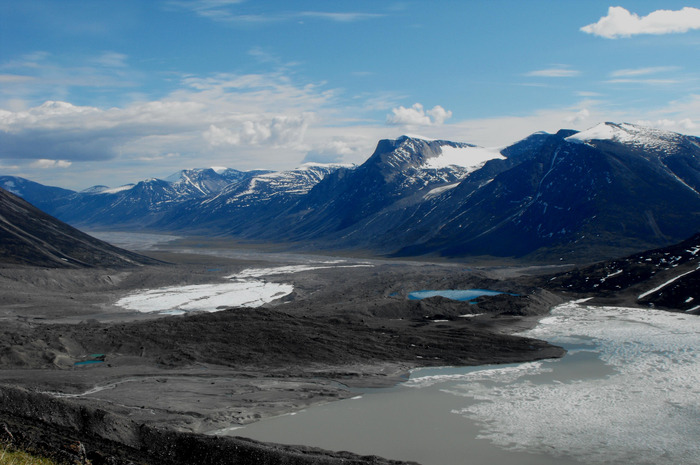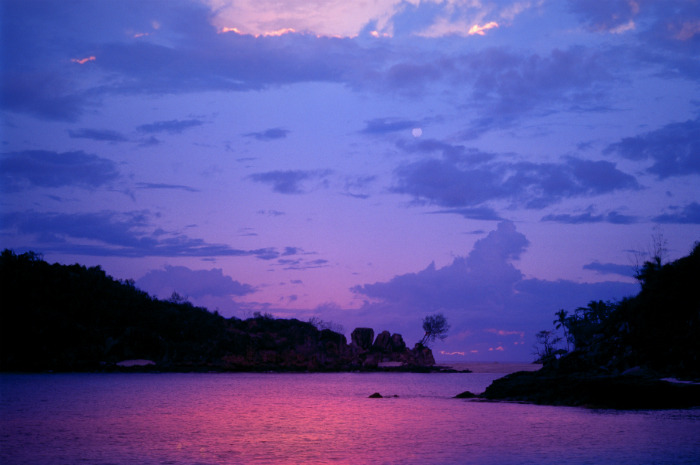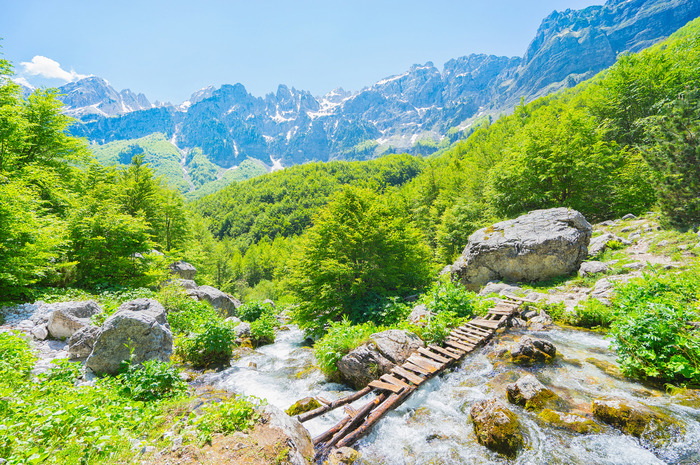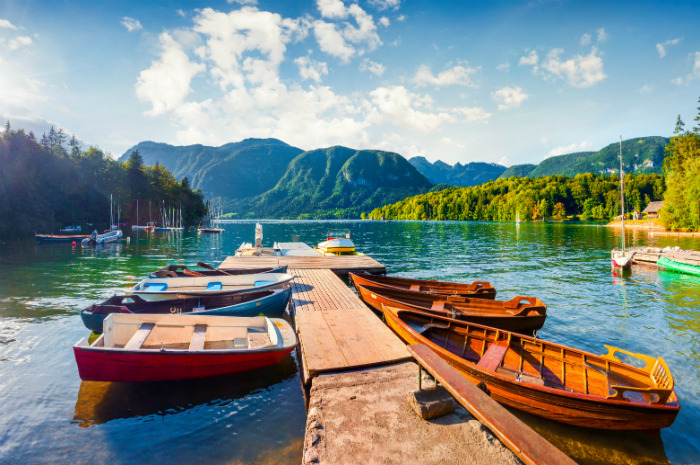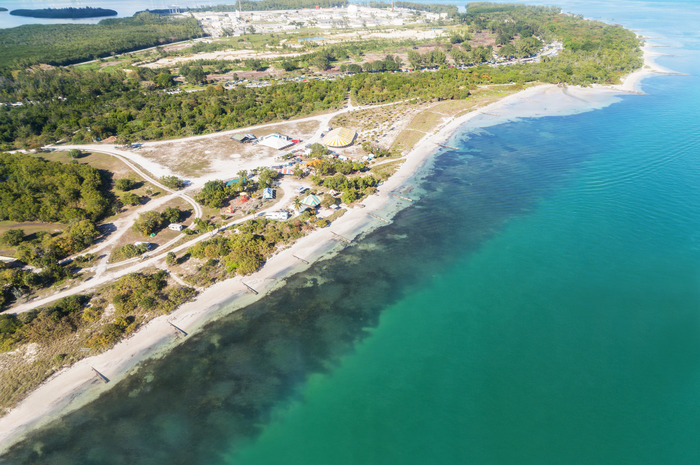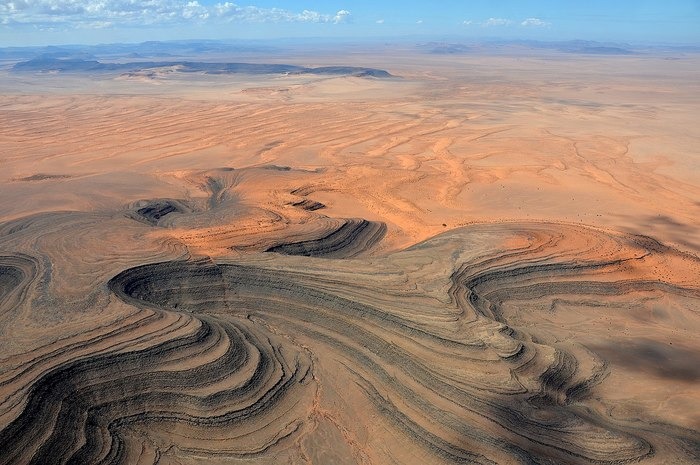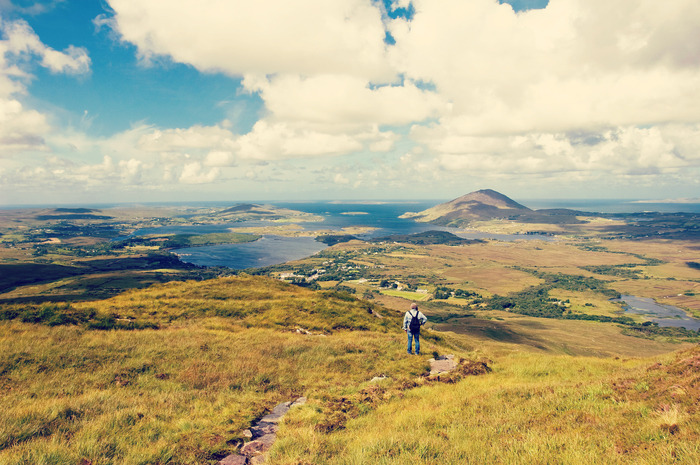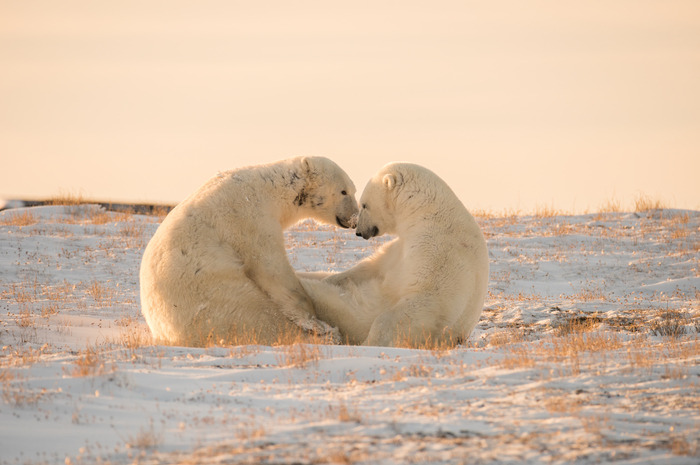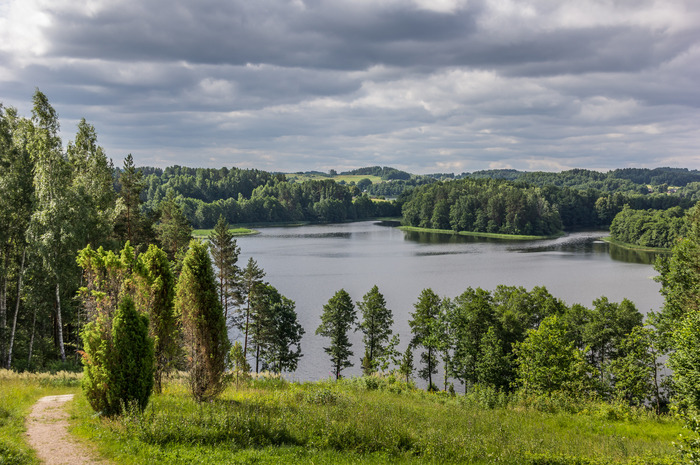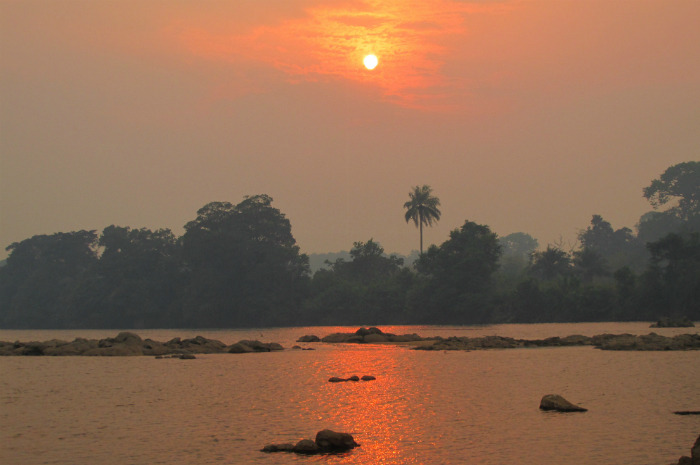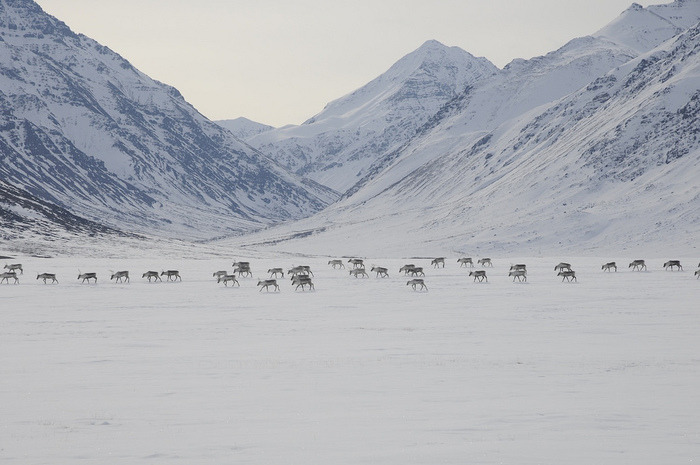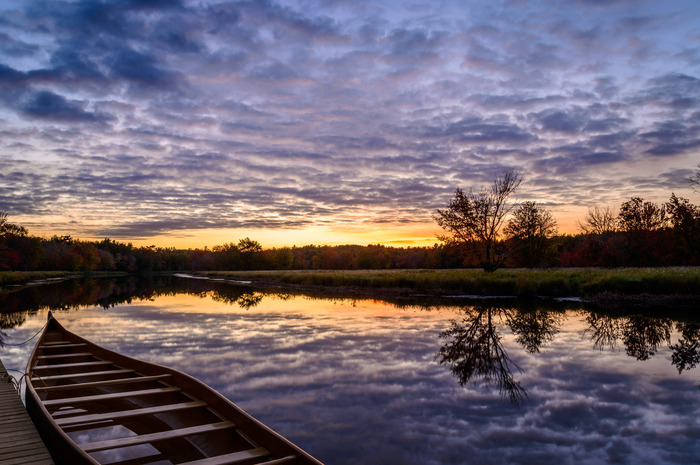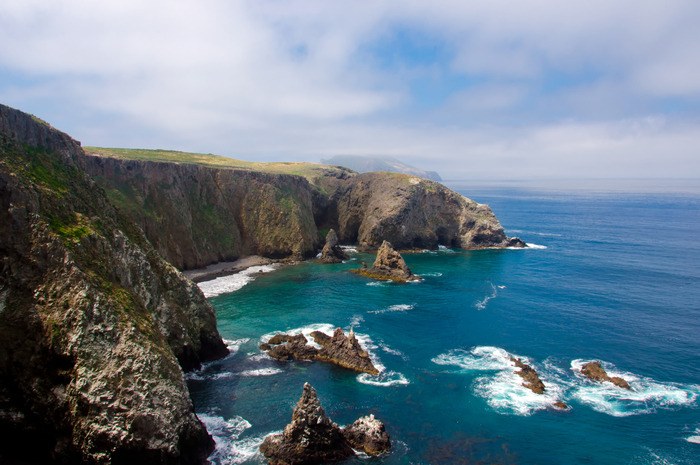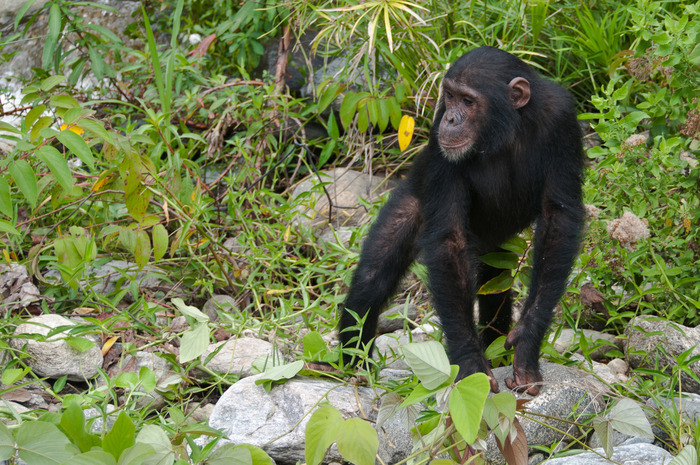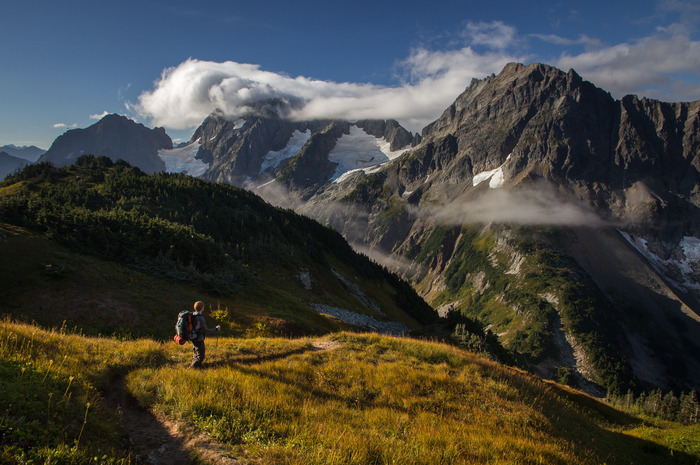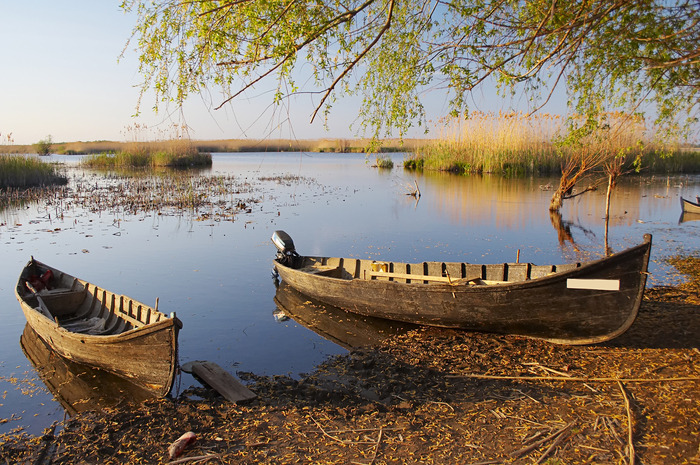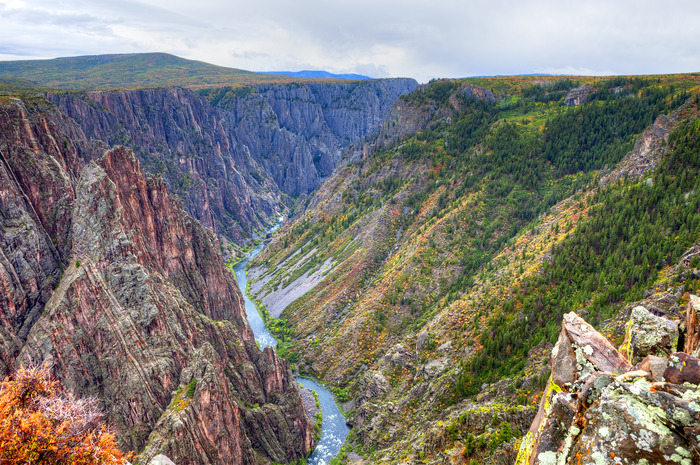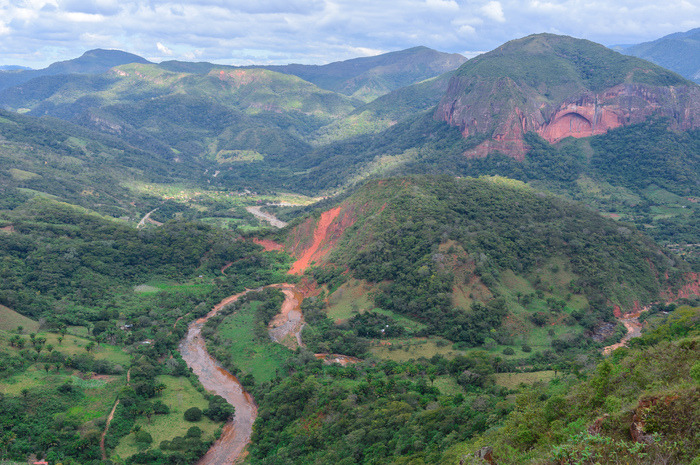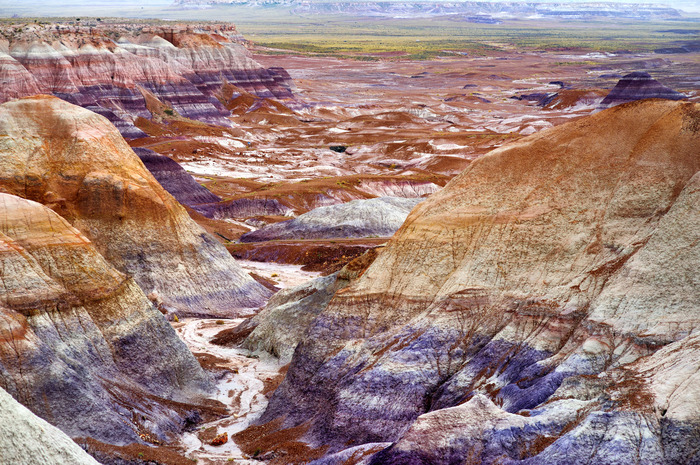The 50 Most Underrated National Parks In The World
Everybody has heard of the Grand Canyon or the Plitvice Lakes National Park in Croatia, and rightfully so. They offer vast wilderness and amazing opportunities for adventure and family fun. But there are hundreds other national parks that reward tourists with unforgettable experiences.
The fact that they are not as crowded as their popular counterparts is, to many people, a huge bonus. Witness for yourself what majestic beauty really is.
Liwonde, Malawi
This is not a big park by any means – it's only about 22 square miles. It's not as popular as other the Serengeti, but it's not completely unknown for a game park. Part of the reason is its remoteness; it's located about 50 miles away from hotels on the southern Lakeshore, according to Malawi Tourism Guide. Wildlife includes quite large numbers of elephants, hippos, crocodiles, antelopes, leopards, hyeana and the occasional visiting lion. Black rhino has been re-introduced.
Congaree, South Carolina
Hike and set up camp among mighty trees, such as giant hardwoods and towering pines, primeval forest landscapes, and diverse plant and animal life up close. The park offers both front and backcountry camping opportunities. The 22,200-acre park protects the largest contiguous tract of old-growth bottomland hardwood forest remaining in the country.
Pirin, Bulgaria
Named after an ancient God, Pirin is one of the tallest mountains in Bulgaria standing at almost 10,000 feet above sea level. Most of the range is protected in the Pirin National Park and the area was named a UNESCO World Heritage site. Simply put, the rock formations and views are not to be missed. The park comprises diverse limestone mountain landscapes with glacial lakes, waterfalls, caves and primarily coniferous forests.
Canaima, Venezuela
Canaima National Park is spread over 3 million hectares (about the same size as Belgium), along the border between Guyana and Brazil. Much of the park is covered by tepui, according to Hike Venezuela. The mountains, cliffs and waterfalls of Canaima form a spectacular and unique landscape. The gorgeous park was recognized as a UNESCO World Heritage Site in 1994.
Point Pelee, Ontario, Canada
It is located at the southernmost point of the Canadian mainland. One of the best times to go is in the spring because of the migratory birds, but in the winter the snowy trails past ice-cloaked trees are stunning. The sandy beaches in the summer will make you want to live there. Point Pelee is Canada's smallest but most ecologically diverse national park, according to Parks Canada.
Sao Miguel, Portugal
The park includes all classified protected areas of the island – from the reserves and natural monuments to protected landscapes. One of them was actually elected as a Natural Wonder of Portugal. The local authorities are really concentrated on the conservation of the park's biodiversity. Two of the most popular attractions are Lagoa do Fogo, where the colors and the contrast with the sea is breathtaking, and the hike to the Sete Cidades lake.
Lençóis Maranhenses, Brazil
Sand dunes transform into magnificent turquoise lagoons during the rainy season. Two rivers that run through the Lençóis Maranhenses push sand from the interior of the continent to the Atlantic Ocean, depositing thousands of tons of sediment. In the park, though, the sand doesn't stay put, according to Smithsonian Magazine. During the dry season, strong winds whip the sand back inland. Water from the torrential rainstorms in the valleys between the dunes creates thousands of crystal clear lagoons.
Cuyahoga, Ohio
This national park is perhaps the most underrated when it comes to fall foliage. Take the park's scenic railroad or hike and bike some of the parks more than 120 miles of well-maintained trails. Visit in late October, not just to see the leaves, but to catch a glimpse of one of the many waterfalls, historic canals or eagles, as they nest in the park.
Wigry, Poland
About 63 percent of the park's area is protected forests. The park is largely unpolluted and it has one of the largest lakes in Poland. It is like paradise for wild nature lovers and paddling fans. The most noticeable difference compared with forests in other parts of the country is the absence of beech, fir, broad-leaved linden, durmast oak and sycamore maple.
Mljet, Croatia
This wild island, Croatia's greenest, in fact, is a true paradise for adventurers who prefer a getaway away from any resemblance to a chaotic city life. Half of the island is actually an unspoiled national park. More active tourists will have endless opportunities for hiking, biking and swimming. The water in the park is much warmer than on seashores of the island.
Namib-Naukluft, Namibia
The park is one of the world's largest protected areas with a size of 59,768 sq. km. The park's massive sand dunes, formed by winds that blow in from the Atlantic Ocean, are one of its defining characteristics. With some reaching more than 1,000 feet high, these dunes are some of the tallest in the world. Their orange-red color is caused by the oxidation of iron in the sand.
Picos de Europa, Spain
Although this park's limestone peaks offer amazing bouldering, as well as sport and trad climbs, it is still relatively unknown to the greater climbing community. If climbing doesn't interest you, you can still trek to various mountain huts. The three main massifs of this natural wonder are surrounded by deep valleys and gorges. The park is open to the public all year round.
Ruaha, Tanzania
Ruaha National Park, the largest in the country but overshadowed by Serengeti, has a high diversity of plants and animals including elephants, buffalos, antelopes and some of rare and endangered species like wild dogs, according to Tanzania Tourism. It is believed to have higher concentration of elephants than any national park in East Africa.
Guadalupe Mountains, Texas
The park is the world's premier example of a fossil reef from the Permian Era from 265 million years ago, according to NPS. Back then a vast tropical sea covered much of the region. Today, it's a barren desert. Go for the extensive hiking and backpacking opportunities. After all, this hidden gem is Texas one of the country's most pristine wilderness areas. There are just two campgrounds in the park.
Mole, Ghana
This was the first national park to be established in Ghana. Because of the lack of predators, safaris can be done of foot – a unique experience that is quite different from the vehicle safaris in southern and eastern Africa, according to Easy Track Ghana. Mole National Park is the only place in the country where you can see elephants in the wild.
Kootenay, British Columbia, Canada
You can see everything from icy mountain rivers to steamy hot springs. Plan a vacation traversing the park's backcountry trails if you really want to see its beauty. If you're looking for a challenging, multiday trek with incredible fall colors, check out the world-renowned Rockwall Trail. Stretching about 35 miles, the path will take you along towering limestone cliffs, as well as through alpine meadows and larch forests. You'll also pass 1,154-foot Helmet Falls, one of the highest waterfalls in the Canadian Rockies.
Durmitor, Montenegro
This park is approximately 39,000 acres large. It was formed by glaciers and is traversed by rivers and underground streams, according to UNESCO. It contains 23 mountain tops over 2,300 meters of altitude. Glacial lakes cover the landscape, making for a spectacular scenic view. It's also a great park for wildlife and plant viewing – there are more than 1,600 vascular plants found in the park and approximately 130 recorded birds.
Saxon Switzerland, Germany
This national park was established in 1990 and encompasses 36 square miles. The park is known for its free climbing opportunities and for its wildly eroded landscape of Elbe sandstone formations, created as a seafloor during the Cretaceous period, according to National Geographic. For the best experience, it is advised to take a rowboat or ride a historic paddle steamer on the water.
Kobuk Valley, Alaska
Grizzly bears (this is how to survive an attack), caribou and sand dunes, to name a few. Located above the Arctic Circle, this 1.75 million-acre park holds endless treasures and wild adventure opportunities. There are no roads in or out and there are no hiking trails either, so you'll need to access this massive park by bush plane. The park is open year-round but you should expect winter conditions from October to April.
Guilin and Lijiang River, China
This national park is known for its scenic area. It covers the 50-mile stretch of the river between Guilin and Yangshuo, bounded by classic sheer karst hills, according to China Highlights. The park's top features include the Nine Horse Fresco Hill, Yellow Cloth Shoal, 20-Yuan-Bill Hill, and the Xingping Ancient Town. The most popular activities are cruising, hiking, and hill climbing.
Wrangell-St. Elias, Alaska
This is America's largest national park — bigger than Switzerland. It stretches from one of the tallest peaks in North America to the ocean. Mount St. Elias, at 18,008 feet, is the second highest peak in the U.S. The park's remote backcountry, which is perhaps why few people go there compared to other parks, is pure wilderness. The park is often referred to as the "mountain kingdom of North America," and it's just a day's drive east of Anchorage.
Mountain Zebra, South Africa
Want to see cheetahs on foot? This is the park for that. This is an unforgettable experience that will bring you closer to nature than ever before. Breathe in the crystal clear air, admire the majestic scenery, enjoy the serene ambience, and see an abundance of wildlife. If you're going for more than a few days, Tubing, rafting, canoeing and abseiling are available.
Cilento, Italy
Just when you though Italy can't be any more worth a trip...Cilento National Park in Southern Italy is a place where mountains meet the sea and gorgeous landscapes blend with the fragrant smell of wild plants. This is where you go to experience Italy off the beaten path.
Great Basin, Nevada
Unless they are going to Las Vegas, most people will skip Nevada all together and head right to the Grand Canyon in Arizona. But they will be wrong, especially if they are into biking, birdwatching, camping, climbing, fishing, hiking, backpacking, horseback riding and/or wildflower viewing. Explore the beautiful marble Lehman Cave and become a citizen scientist. Also, the Great Basin is where you'll experience some of the darkest nights in the world.
La Mauricie, Quebec, Canada
The park and its lakes and forests are a favorite playground for outdoor lovers. There's no shortage of opportunities for activities for solo visitors as well as families who want to relax far from the bustle of the city. Be curious and join guided walks discovering lakes, woodlands, plants and animals.
Liuwa Plain, Zambia
The remote park in the far west is pristine wilderness. This is what attracts people. The game is spread out across the plains and takes some driving around to find, according to Zambia Tourism. But the rewards of coming upon a vast herd of blue wildebeest, a prowling wild dog, or a pride of dozing lions in this forgotten piece of Africa is worth every effort. August to December is the best time to visit. The massive herds of blue wildebeest come in November.
Belovezhskaya Pushcha, Belarus
This is one of the largest forest massifs in the plains of Europe. It has remained largely untouched. In ancient times, during the spring floods, the space around the park turned into a huge sea, above which a forest was rising, where the animals fled from the flood, according to the park's website. Belovezhskaya Pushcha, which is popular among locals, is famous for its ancient named oak trees dating back more than five centuries.
Wind Cave, South Dakota
The main attractions in the park, which is one of the oldest in the country, include the world's longest and most intricate collection of caves and more than 28,000 acres of mixed-grass prairie, ponderosa pine forest and its accompanying wildlife. Join in on one of the park's "Adventures in Nature," which provides a comprehensive overview of all the park has to offer.
National Park of American Samoa
This is one of the secret gems of the National Park Service. You don't need a passport to visit this adventure destination. The vibrant reef lies just inches below the surface at Ofu Beach. Not a lot of people go to the only U.S. national park south of the equator. The island park is 2,600 miles southwest of Hawaii, making it one of the most remote national parks in the system. Visitors get to enjoy tropical rainforests, coral reefs, and about 4,000 acres of ocean surrounding the islands.
Tatra, Poland/Slovakia
The mountain range Tatras, together with the Polish part of the National Park, has been identified as natural, biospheric, reserve of UNESCO since 1993. The park is the oldest of Slovakia's protected areas. It is the unique protected area of flora and fauna among the tallest European high mountains situated north of the Alps, according to Travel in Slovakia.
Isle Royale, Michigan
On the isolated island, which is one reason why it gets fewer visitor than other parks, moose and wolves outnumber humans (some of whom live on the island permanently) and scenic vistas can be found throughout the 207-square-mile island. The remote wilderness is said to be the perfect spot for every outdoor enthusiast, from hikers to kayakers and even scuba divers.
Auyuittuq, Canada
It's pronounced "ow-you-we-took." Explore a landscape that is 85 percent rock and ice, dominated by steep and rugged mountains, with vast glaciers and powerful rivers, according to Nunavut Travel. The most popular summits for climbers are Thor Peak and Mount Asgard. As you can imagine, the summer season is short; after all, Nunavut is in northern Canada, forming most of the Canadian Arctic Archipelago.
Mayumba, Gabon
This is where you'll see some of the most stunning natural sights Africa has to offer. The park, along with its lush rainforests and beaches, is popular with locals, but international tourists don't go to Gabon very often. The park is home to some of the best conservation efforts in Africa and the world's largest nesting ground for the leatherback turtle.
Valbona Valley, Albania
All of the land in the park – a surface of 8,000 hectares – is protected. It and offers a variety of opportunities for hiking, fishing, mountaineering, and trekking. Valbona Valley is located between the rugged and remote mountain peaks. The Valbona River is where people can fish, canoe or kayak. The Valbona village is the focal point of the Valbona National Park. The village of Valbona is secluded, with few lodging possibilities, no stores, post office, doctors, or even a gas station.
Triglav, Slovenia
This is one of the first European parks and the only national park in Slovenia. It consists of the highest summit, standing in almost the middle of the park – Triglav Mountain. It's also one of the largest national reserves in Europe. Explore the incredible lakes, canyons, rivers, caves, waterfalls, forests and Alpine meadows.
Biscayne, Florida
Most people naturally imagine Miami Beach, the Everglades or Dry Tortugas if they hear about Florida. Anyone visiting Miami should visit the park as well. Biscayne is just 5 percent land. You can see evidence of 10,000 years of human history, from shipwrecks. It's the perfect spot for both outdoor adventurers. Biscayne offers plenty of opportunities for visitors to get out in the water or camp overnight.
Sperrgebiet, Namibia
This is one of Namibia's newest National Parks, which is why perhaps not many people know about it yet. It is also largely undeveloped and much of it remains inaccessible to visitors, according to Namibia Tourism. The park's name literally means 'forbidden territory'. It used to be the site of a massive diamond mining industry.
Connemara, Ireland
Some locals say Connemara shows "the real beauty of Ireland." The park encircles a kaleidoscope of the region's most spectacular scenery in a 4,942-acre setting, according to Galway Tourism. With very little man-made development, it is a blend of mountains, bogs, heaths, grasslands, rivers, waterfalls, and nature trails. Connemara ponies run wild and assorted wildlife roam the gentle landscape.
Wapusk, Manitoba, Canada
This is a remote subarctic. It protects one of the largest polar bear maternity denning areas in the world, according to Parks Canada. Nature lovers watch for arctic foxes, arctic hares, wolves, caribou, and wolverine. There is no road access and you'll need a guide to visit the park. Frontiers North Adventures is the only other eco-tour company licensed to operate in Wapusk National Park, according to Travel Manitoba.
Aukstaitija, Lithuania
This is Lithuania's first national park. More than 70 percent of it is actually pine stands, including the ancient woods of Azvinciai, Mincia and Linkmenos, according to Visit Lithuania. Explore the picturesque forested and hilly terrain, hundreds of stunning lakes and ethnographic villages. Many of the park's 80 villages have retained their old original layout, archaic wooden farm buildings and other constructions.
Tiwai, Sierra Leone
Tiwai Island has lush rainforest, unique and rich biodiversity, and a high concentration of endemic species, UNESCO says. It is currently a protected area and an eco-tourism destination.
Gates of the Arctic, Alaska
This is the northernmost national park in the U.S. The entire boundary of Gates of the Arctic is north of the Arctic Circle. Devoid of roads, campsites and marked trails, this park is the epitome of a wilderness experience. For the most adventurous photographer, this national park offers unspoiled natural beauty at its finest.
Kejimkujik, Canada
Located in Nova Scotia, Kejimkujik was designated as a Dark Sky Preserve in 2010, according to Parks Canada. This is the place to go camping under the stars. Kejimujik National Park Seaside is a separate protected wilderness where you can see pristine beaches, marvel at stunning turquoise waters, learn about rich lagoon systems, and experience coastal wildlife.
Channel Islands, California
With five gorgeous islands, visitors can have fun kayaking, snorkeling and swimming in this beautiful national park. All travel on and between them is on foot or by private boat or kayak. The park is open year round, but some boat services only run in summer and fall. It is accessible only via a short ocean voyage or a small-plane flight. The isolation has left the park with great ecological diversity. Visitors get to experience coastal southern California the way it once was.
Mahale Mountains, Tanzania
Seen as one of the most scenic landscapes in Tanzania, situated along the clear blue waters of Lake Tanganyika, Mahale Mountain National Park offers visitors the chance to bask in the beauty of many different terrains all at once. It features dense, green forests, the rugged Mahale mountain range, sandy coves and beaches. Its biggest draw, though, is its wild chimpanzee population.
North Cascades, Washington
The park is just about three hours from Seattle. You can find everything there – jagged peaks, abundant forest, alpine lakes, cascading waterfalls, and more than 300 glaciers. Whether you prefer backpacking trips or camping, climbing and fishing, this national park will accommodate you. The unique wilderness is worth the trip. The North Cascades is not among the most visited parks, which makes it more appealing to many avid travelers.
Danube Delta, Romania
The Danube delta hosts over 300 species of birds as well as 45 freshwater fish species in its numerous lakes and marshes, according to UNESCO. It is almost unspoiled. It is basically a mosaic of river branches, channels, lakes, reedbeds, sand dunes, oak forests with Mediterranean vegetation, according to Danube Parks. Danube Delta is one of the largest delta in Europe, and one of the most untouched wetlands on the continent.
Black Canyon of the Gunnison, Colorado
Black Canyon has some of the steepest cliffs, oldest rock, and craggiest spires in North America. They make for strenuous hiking. There are no maintained or marked trails into the inner canyon. In summer, the canyon is notorious for poison ivy, but there are no poisonous snakes; it is too cold at night for them. The park is open year round but the two rim roads are typically open to vehicles only from April to November.
Amboró, Bolivia
Park Amboro lies in a unique geographical position at the confluence of 3 distinct ecosystems: the Amazon basin, the northern Chaco and the Andes (nowhere else in the world do three such vast environments converge), according to Ruta Verde Tours. Adventure awaits here – hikes, mountain biking, horseback riding, rock climbing, swimming, canoeing, camping, fishing, to name a few.
Petrified Forest, Arizona
The park is home to multi-hued badlands of the Painted Desert, historic structures, archeological sites, native grassland, and displays of over 200-million-year-old fossils. This national park is known for its large deposits of petrified wood found over approximately 146 square miles.
